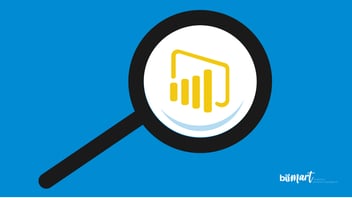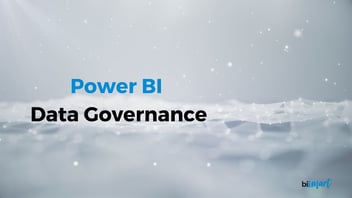In this article we explain how can you use Power BI to optimize the SEO strategy of your business by analyzing and curating data and creating data visuals.
In this age of online business and marketing, information is everything. In order to make sales, companies need to know who their target market is and how to reel them in. And in this endeavor, there’s no such thing as too much data... Or is there?

| In this article you will find... |
Fast Company claims that data overloads (Big Data) can actually be quite harmful to productivity and decision-making. Luckily, we have Power BI applications and services to help make gigabytes of data more easily digestible — especially for data-heavy industries like SEO. But how would such technology fare in SEO? Keep reading and find out!
What is SEO?
SEO, or search engine optimization, is a process where content is created for a website in the hopes of making it more visible in a search engine’s results. Optimization includes curating valuable content, pursuing link development, and ensuring that it all fits the standards of the search engine’s algorithms. These tasks might be more difficult for smaller and newer businesses to navigate through all the necessary aspects of SEO.
SEO may seem daunting when there are so many factors to consider. Some variables include a webpage’s relevance to the searcher’s query and the website’s overall accessibility (gauged by how quickly it loads and whether it can be viewed on mobile, for exapmple).
These factors also change depending on the search engine. For instance, Google’s algorithm seems to pay attention to social media engagement. This means that entities who are actively engaged in social media platforms are more likely to make the front page.
In summary, SEO is a lot of work involving which aims to refine websites, content creation, and external linking.
How Can Power BI Improve Your SEO Strategy?
The strength of Power BI is its ability to aggregate and analyze data. This tool is able to recollect huge amounts of information and put it together in a neat report. It’s also at the forefront of data visualization technology. Essentially, Power BI can collate data into visually appealing and easy to comprehend graphs and figures. Features like these make it easier for businesses to understand the data they’re working with. At Bismart, as one of Microsoft's preferred partner Power BI companies, we have been using this group of tools to create our reports, dashboards, charts and visuals for years.
It just so happens that the SEO industry has no shortage of data. On the contrary, SEO strategies must be developed by analyzing large amounts of data: keyword data, website data, traffic data, audience data... and any other information that can assist in optimization. As it stands, Power BI is the only platform that allows you to collate all that information to get a full view of your website’s performance in the most straightforward way possible. Seeing the big picture is vital in SEO, as it allows you to spot the gaps in performance.
For instance, with Power BI’s capability for data visualization, you could export relevant keywords and plot a chart that shows how each keyword contributed organically to the website’s traffic. This allows you to hand-pick the keywords you deem most effective in bringing in clicks and later converting into sales. You can also use Power BI to compare two different sets of data against each other. Average page speed and bounce rate can be overlaid to show how a website’s accessibility might affect how long viewers decide to remain there, and this can tell you when it’s time to improve your website’s performance. These are just some of the applications of Power BI in the SEO Industry.
On balance, Power BI applications and services will only further the efficiency of your business' SEO strategy. Such a tool will make it easier to pinpoint areas of improvement when creating content and tweaking websites.
We encourage you to access it and see for yourself how efficient Power BI tools when collecting and presenting data! One thing's for sure: From here on out, large quantities of data will no longer be a hindrance to optimization!
Exclusively written for bismart.com. Prepared by JBragg | JBragg is a marketing strategist with a fascination for the latest tools and technologies that help businesses move forward. When she's not working, she enjoys yoga and urban gardening.



